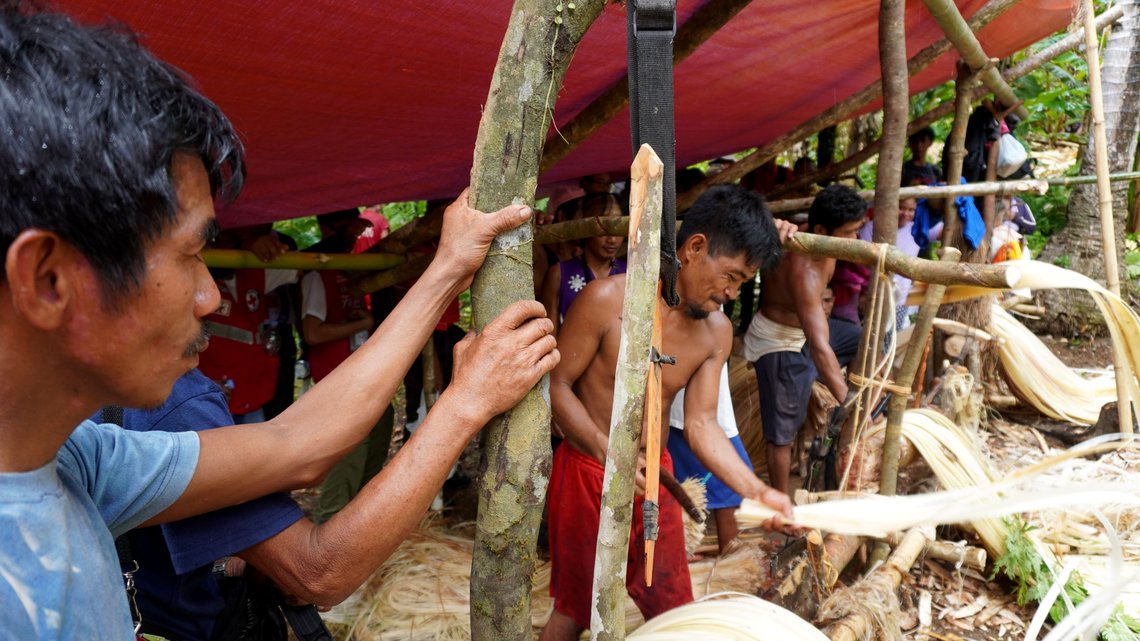Categories
Harnessing anticipatory action to avoid or reduce disaster displacement
Recent years have seen a surge in people being displaced by disasters – often within their own countries. In 2020 alone, weather- and climate-related events led to more than 30 million people worldwide being displaced within their country, according to the Internal Displacement Monitoring Centre. The Nansen Initiative describes such situations as ‘disaster displacement’ and, as the world becomes warmer, there is an increased likelihood of extreme weather putting vulnerable communities at risk of disaster displacement, as projected in the recent IPCC report.
Anticipatory action approaches, such as the IFRC’s forecast-based action mechanism, present a unique opportunity for humanitarian actors to reduce the likelihood of people being displaced by a disaster. For example, these approaches can increase people’s mobility, meaning they can avoid the worst impacts of climate-related hazards by temporarily moving themselves and their assets away from the hazard. This reduces the risk of them being displaced in the longer term.
To date, however, anticipatory action has not been sufficiently harnessed in the context of disaster displacement. To this end, Oxford University, the IFRC and the Red Cross Red Crescent Climate Centre conducted a desktop study to explore options for strengthening the links between anticipatory action and disaster displacement. The results, coupled with expert views, were recently published in Environmental Research Letters. Here, we share a few highlights from this study.
Anticipatory action can reduce the risk of disaster displacement
Feasibility studies, which take place during the early stages of setting up an anticipatory action initiative, already consider the risk of disaster displacement. For example, these studies note which populations are at the greatest risk of displacement and why. To ensure that the planned actions are effective and relevant, the authors suggest gathering the views of people previously displaced by disasters (although it should be noted that this is not always possible).
Bangladesh’s Early Action Protocol (EAP) for Cyclones demonstrates the value of doing so in practical terms. This EAP prioritizes areas with more than 25 per cent of houses at risk of being destroyed by cyclones, thus indirectly considering the risk of disaster displacement. This recommendation arose from a series of consultations, including with previously displaced people; the final figure (25 per cent) was also based on the budget available and the extent of the anticipated impacts.
Anticipatory action can contribute to other stages, such as analysis of disaster displacement risks and preparedness (e.g., identifying who is at risk of displacement during a feasibility study), as well as responses to disaster displacement. The following examples show how this is already being done.
Anticipatory action can protect people against displacement by preventing or reducing the impacts of a hazard on their property and livelihoods, as well as the basic services available in their region. In the Philippines, for example, anticipatory actions implemented ahead of hazards (e.g., typhoons) include strengthening shelters, the early harvesting of crops and evacuation. All of these make it easier for people to return to their homes more rapidly post-hazard, reducing the likelihood of them being displaced for a prolonged period.
Protecting the livelihoods of vulnerable communities also gives them freedom to choose to leave areas highly exposed to disastrous hazards, either temporarily or permanently. In Mongolia, pastoralist communities affected by dzud (severe winter) can reduce livestock mortality through anticipatory actions such as livestock nutrition kits and unconditional cash transfers provided in advance. These actions can reduce the likelihood of herders being displaced as a result of losing their herds (e.g., to seek better education or employment opportunities).
Strengthening the links between displacement and anticipatory action
These examples, all of which are detailed in the full research study, demonstrate that anticipatory action can significantly contribute to preventing or reducing disaster displacement among vulnerable communities, as well as facilitating their short-term mobility when required.
However, there is need to scale up research into this theme, and to pilot further anticipatory actions in disaster displacement contexts. This will help us to better understand the barriers to, and opportunities for, scaling up the most promising approaches.
The full scientific article, ‘The role of anticipatory humanitarian action to reduce disaster displacement’, is available here (open access).

This blog was written by Eddie Wasswa Jjemba, Red Cross Red Crescent Climate Centre, with contributions from Lisa Thalheimer, Center for Policy Research on Energy and the Environment, Princeton University.

